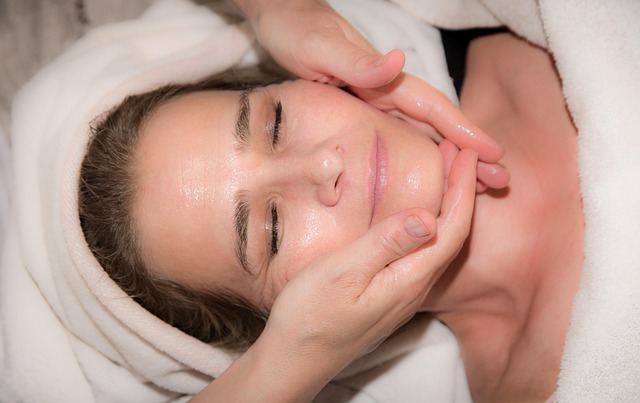Discover Serenity: The Unexpected Delights of a Full-Service Spa Experience
Step away from the rush of daily routines and enter a setting designed for calm and renewal. A full-service spa experience in 2025 offers soothing treatments, restorative therapies, and a chance to pause in a tranquil space. From gentle massages to revitalizing skincare, each moment is crafted to ease tension and refresh both body and mind, leaving you with a sense of balance that lingers beyond your visit.

In an era marked by constant connectivity and relentless schedules, the appeal of a comprehensive spa visit extends far beyond surface-level relaxation. Full-service spas provide an integrated approach to wellness, combining traditional therapeutic techniques with modern understanding of physiology and psychology. Whether you’re seeking relief from chronic tension, improved skin health, or simply a respite from daily pressures, understanding what these establishments offer can help you make informed choices about your self-care routine.
How Spa Treatments Actually Work on Your Body and Mind
Spa treatments operate through multiple physiological and psychological mechanisms. Massage therapy, for instance, increases blood circulation, promotes lymphatic drainage, and triggers the release of endorphins—naturally occurring compounds that reduce pain perception and elevate mood. Swedish massage uses long, flowing strokes to relax superficial muscle layers, while deep tissue techniques target chronic tension patterns in deeper muscle structures.
Hydrotherapy treatments harness water’s physical properties to therapeutic effect. Warm water immersion dilates blood vessels, reducing blood pressure and easing muscle stiffness. Alternating hot and cold applications stimulate circulation and may support immune function. Mineral-rich thermal waters, where available, deliver trace elements through the skin that some research suggests may benefit joint health and skin conditions.
Facial treatments combine manual techniques with active ingredients to address skin concerns. Exfoliation removes dead surface cells, improving texture and allowing better absorption of subsequent products. Massage movements during facials stimulate facial muscles and promote drainage, potentially reducing puffiness. Meanwhile, the quiet, controlled environment of treatment rooms activates the parasympathetic nervous system, shifting the body from stress response to rest-and-digest mode—a state conducive to healing and restoration.
The Evidence-Based Benefits of Regular Spa Visits
Research into spa treatments has expanded considerably in recent years, moving beyond anecdotal reports to quantifiable outcomes. Studies indicate that regular massage therapy can reduce cortisol levels—a primary stress hormone—while simultaneously increasing serotonin and dopamine, neurotransmitters associated with emotional well-being. For individuals managing anxiety or mild depression, these biochemical shifts can complement other therapeutic approaches.
Consistent spa attendance may also support cardiovascular health. The combination of heat exposure, massage, and relaxation has been associated with improved blood pressure readings and enhanced vascular function in some research populations. For those dealing with chronic pain conditions such as fibromyalgia or arthritis, regular treatments can reduce pain intensity and improve quality of life measures.
Skin health benefits from professional treatments that go beyond home care capabilities. Regular facials can help manage conditions like acne, rosacea, and premature aging through targeted ingredient application and professional extraction techniques. The cumulative effect of repeated treatments often yields more noticeable results than sporadic visits.
Beyond physical benefits, the psychological impact of dedicated self-care time should not be underestimated. Establishing a regular spa routine creates structured opportunities for mental decompression, potentially improving sleep quality, concentration, and overall life satisfaction.
Tips and Resources for Choosing the Right Spa in 2025
Selecting an appropriate spa requires consideration of several factors. Begin by identifying your primary goals—whether pain management, skin improvement, stress reduction, or general wellness. Different establishments specialize in varying approaches, from clinical medical spas offering advanced skincare procedures to holistic wellness centers emphasizing natural therapies.
Verify credentials and qualifications. Reputable spas employ licensed therapists and aestheticians who have completed recognized training programs. Check online reviews, but look for patterns rather than isolated comments. Consistent mentions of cleanliness, professionalism, and results carry more weight than single extreme reviews.
Schedule a consultation or facility tour before committing to treatments. Observe cleanliness standards, ask about product lines used, and inquire about therapist experience with your specific concerns. A quality establishment will welcome questions and provide transparent information about their services and practitioners.
Consider location and accessibility. While destination spas offer immersive experiences, local services in your area provide convenience for regular visits, which often yield better long-term results than infrequent elaborate sessions.
Understanding Spa Treatment Pricing and Options
Spa treatment costs vary considerably based on location, facility type, treatment duration, and therapist expertise. Understanding typical pricing structures helps in budgeting and identifying good value.
| Treatment Type | Typical Duration | Estimated Cost Range |
|---|---|---|
| Swedish Massage | 60 minutes | £50-£90 |
| Deep Tissue Massage | 60 minutes | £60-£100 |
| Hot Stone Therapy | 75 minutes | £70-£120 |
| Classic Facial | 60 minutes | £55-£95 |
| Advanced Facial Treatment | 75-90 minutes | £80-£150 |
| Body Scrub | 45 minutes | £45-£75 |
| Hydrotherapy Session | 30-45 minutes | £35-£65 |
| Full Day Package | 3-4 hours | £150-£300 |
Prices, rates, or cost estimates mentioned in this article are based on the latest available information but may change over time. Independent research is advised before making financial decisions.
Many establishments offer package deals that reduce per-treatment costs when purchasing multiple sessions. Membership programs at some spas provide monthly credits or discounted rates for regular clients. Off-peak timing—midweek mornings or early afternoons—sometimes comes with reduced pricing compared to weekend appointments.
Be wary of unusually low prices, which may indicate inexperienced staff, lower-quality products, or rushed treatments. Conversely, premium pricing should correspond to demonstrable added value such as specialized expertise, luxury amenities, or exceptional products.
Making the Most of Your Spa Experience
Maximizing benefits from spa visits involves preparation and follow-through. Arrive early to transition mentally from outside demands to treatment mode. Communicate clearly with therapists about pressure preferences, problem areas, and any health conditions that might affect treatment choices. Hydration before and after treatments supports the body’s detoxification processes and helps prevent post-treatment headaches.
Avoid heavy meals immediately before appointments, as digestion can interfere with relaxation. Following treatments, allow time for rest rather than immediately returning to demanding activities. The relaxation response continues for hours after treatment, and protecting this state extends benefits.
Consider establishing a regular schedule rather than treating spa visits as rare indulgences. Monthly or bi-monthly appointments allow cumulative benefits to develop and create consistent self-care touchpoints throughout the year.
A full-service spa experience represents an investment in comprehensive well-being that addresses both immediate comfort and longer-term health. By understanding how treatments work, recognizing evidence-based benefits, choosing establishments wisely, and approaching visits strategically, you can transform occasional pampering into a meaningful component of your wellness routine. The unexpected delights of such experiences often lie not just in momentary pleasure, but in the lasting sense of balance and vitality they help restore.




